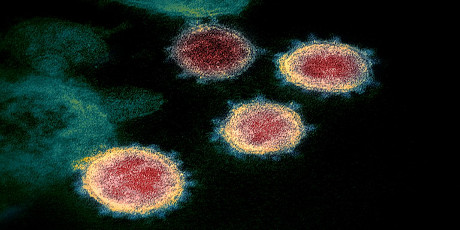Putting COVID-19 infections on the map 10 Jun 2020

Minister for Business, Enterprise, and Innovation Heather Humphreys, TD has announced funding for CO/SMID - a Technological University Dublin (TU Dublin) and University College Cork (UCC) project, which will track COVID-19 clusters based on geo-referenced data to more accurately predict future outbreaks and influence future interventions. The funding was awarded as part of a rapid research response funding call published jointly by Science Foundation Ireland, Enterprise Ireland and the IDA (SFI-EI-IDA).
Led by Dr Paul Hynds, a Senior Research Fellow in the Environmental Sustainability and Health Institute (ESHI) at TU Dublin and Dr Jean O’Dwyer, a Principal Investigator and Lecturer at the School of Biological, Earth and Environmental Sciences/Environmental Research Institute at University College Cork, CO/SMID will investigate retrospective COVID-19 infection data to model potential future outbreaks in the Republic of Ireland.
Describing the CO/SMID methodology, Dr Hynds said, “The CO/SMID project represents an entirely new approach to this ongoing crisis, employing a highly validated, geo-referenced case dataset to track Covid-19 clusters. This will allow us to monitor the effects of significant events and interventions among specific subpopulations, such as in care-homes or smaller regions. By tracking this clustering data retrospectively, we can improve the forecasting of future clusters while making recommendations for future interventions.”
Dr O’Dwyer added that “the current COVID crisis calls for a multidisciplinary research response which blends traditional epidemiology with advanced modelling and geospatial analysis. One of the aims is to further understand how the disease will respond to the easing of restrictions and prompt real-time recommendations for ongoing emergency management and communication”.
CO/SMID, which is due to commence imminently, is a multi-agency project led by TU Dublin and University College Cork, with expertise from the Health Protection Surveillance Centre, the Health Informatics Unit, the Health Service Executive, the National Virus Reference Laboratory and the University of Southampton.
PIC: Transmission electron microscope image shows SARS-CoV-2—also known as 2019-nCoV, the virus that causes COVID-19—isolated from a patient in the U.S. Virus particles are shown emerging from the surface of cells cultured in the lab. The spikes on the outer edge of the virus particles give coronaviruses their name, crown-like. Image captured and colorized at NIAID's Rocky Mountain Laboratories (RML) in Hamilton, Montana. Credit: NIAID